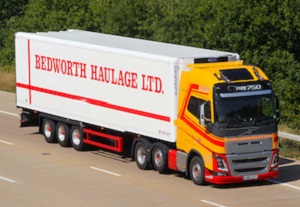As part of its role in maintaining standards for safety in domestic vehicles as well as HGVs, buses and other commercial vehicles, the DVSA has set itself some tough targets for 2016, reports DrivingDefences.com.
 It was announced in 2015 that they were reviewing the way MOT tests were carried out. Traditionally, the majority of commercial vehicle tests were carried out at sites owned and run by the DVSA, but in the interests of economy and cutting costs, they have changed their approach to this vital function.
It was announced in 2015 that they were reviewing the way MOT tests were carried out. Traditionally, the majority of commercial vehicle tests were carried out at sites owned and run by the DVSA, but in the interests of economy and cutting costs, they have changed their approach to this vital function.
Their new target is that by the end of March 2016, they want 95% of commercial vehicle tests to be carried out at non-DVSA sites (called AFTs or authorised testing facilities), of which there are 480 nationwide. They have already achieved a figure 90% in 2015. They also plan to sell off a number of properties in 2016, presumably some of them defunct testing stations.
The DVSA are also continuing t to roll out their NGT (or new generation testing programme), which offers much-needed increasing flexibility in order to meet changing industry needs by providing, for example, central booking and customer query processes and testing 24/7. This plan should be fully rolled out by the end of 2016.
Another core part of the NGT is a revision to the way MOT testers are trained, and the MOT refresher training courses were recently suspended in order to implement a new annual training programme. The new programme replaces the original refresher course, which was mandatory every 5 years, with an annual requirement to complete 3 hours of training every year between April and March. The onus will now be on the tester to schedule, complete and record that training.
A guidance note has been issued to the effect that the new training will not be delivered by the DVSA, they will simply publish the syllabus each year; the training will be completed in conjunction with a commercial training organisation with a track record in successful online training. For example, the 2016/17 syllabus for Class 1 & Class 2 vehicles includes brakes, CPD planning & recording, signalling equipment and lighting. Class 3, Class 4, Class 5 and Class 7 vehicle syllabus includes headlamp aim, the driver’s view of the road and CPD planning & recording. Following the training, the testers will then sit an annual exam for reauthorisation to maintain their tester status.
A combination of the new flexible approach to MOTs and the revised and more frequent training of the testers in order to keep their skills fresh and valid can only be of benefit to hauliers and other operators of HGV vehicles. This will be supported by the new MOT IT system, which has started to be rolled out to around 22,500 sites in the UK to give a modern, slick and fit-for-purpose MOT service. The whole process is supported by the final target for the MOT service; the DVSA have stated that they want to maintain satisfaction with the service at 87%




